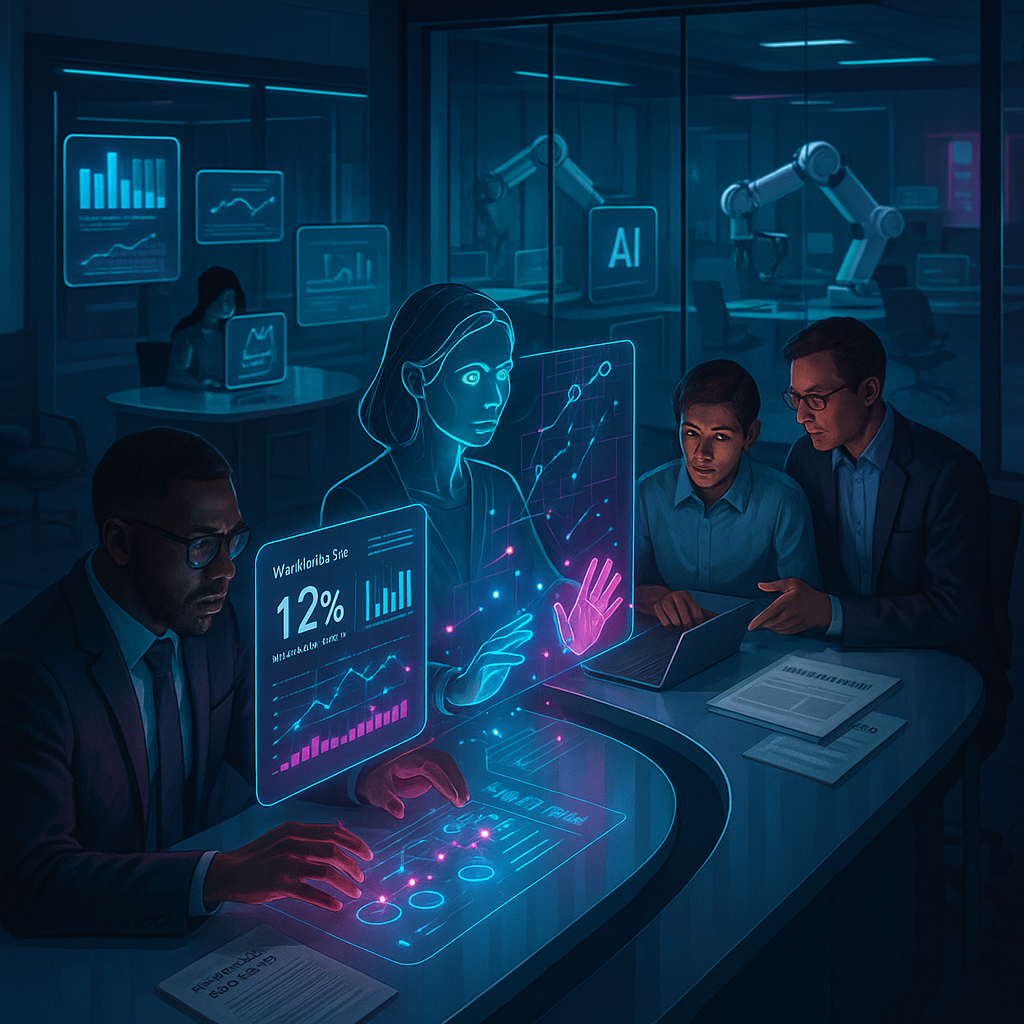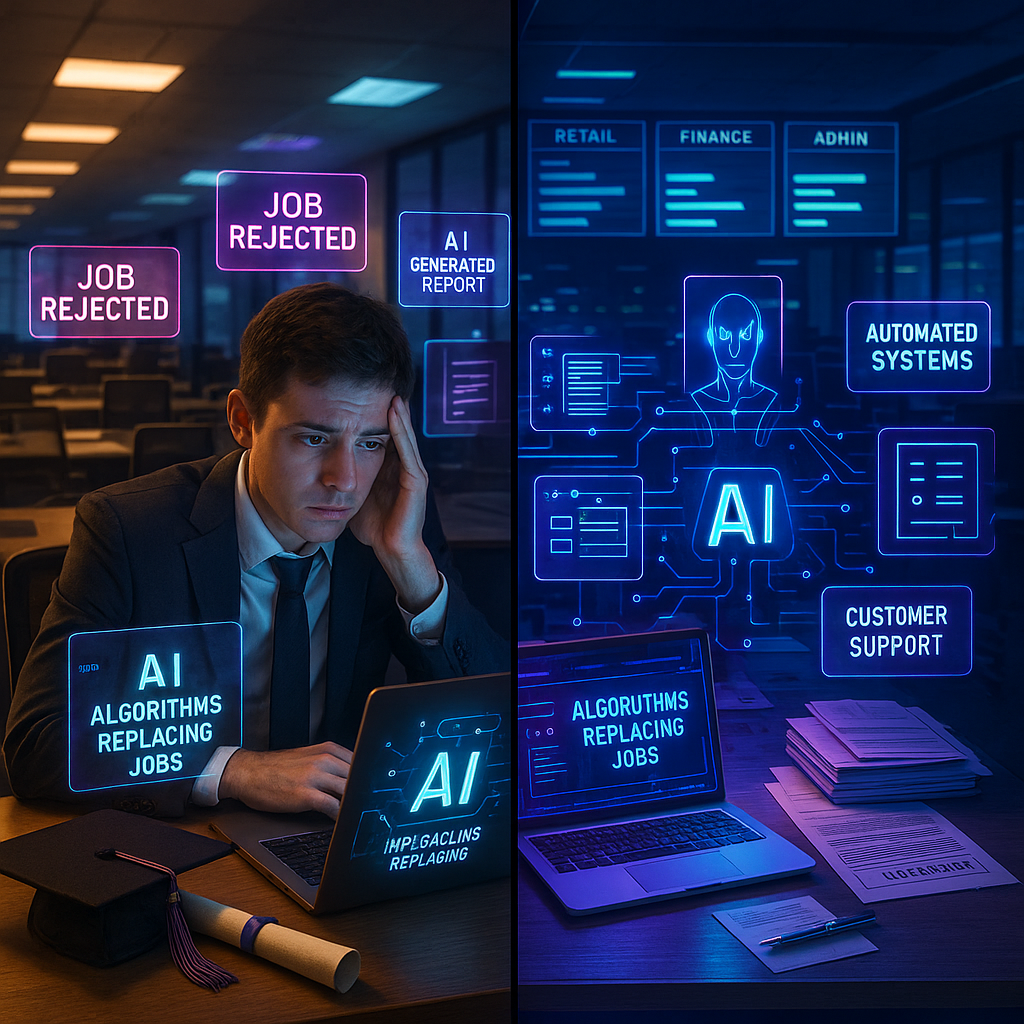Key Takeaways
- Democratizing AI with drag-and-drop simplicity: Low-code platforms remove technical barriers, making AI development accessible to non-coders and igniting broader creativity and cross-discipline collaboration.
- Accelerating innovation: Intuitive workflows drastically shrink the gap between inspiration and functional AI prototypes, encouraging rapid iteration and enabling organizations to adapt faster to changing needs.
- Collaboration as a catalyst: Visual, modular tools foster seamless cooperation among domain experts, business leaders, engineers, educators, and scientists, sparking richer, more relevant AI solutions across industries.
- Empowerment without compromise: Users access robust, pre-built AI models but retain the flexibility to customize and enhance these systems as unique requirements emerge.
- Bridging human vision and machine execution: These platforms serve as the connective tissue between user-driven ideas and the raw capability of artificial intelligence, allowing even non-specialists to transform abstract concepts into operational systems with ease.
- Continuous learning built-in: Automated testing and feedback loops empower users to refine AI solutions in real time, reflecting the iterative learning that defines both intelligent machines and innovative teams.
- Breaking down silos: Low-code AI tools integrate effortlessly with existing healthcare, finance, education, and business systems, allowing organizations to update or augment legacy infrastructures without disruptive overhauls.
Low-code AI workflows do not simply accelerate development. They fundamentally transform who gets to innovate and how ideas become reality. This article unpacks platforms, best practices, and the cultural revolution turning AI from an exclusive craft into a shared space for inventiveness and impact.
Introduction
Imagine building an intelligent system as fluidly as sketching an idea on a whiteboard. No complex programming. No exclusionary jargon. Just a direct channel between pure creativity and a living, learning digital solution. Low-code AI development workflows promise exactly this: the dissolution of traditional boundaries between inspiration and implementation, empowering anyone willing to experiment and solve problems.
No longer is artificial intelligence the guarded territory of the mathematically gifted or the coding elite. With intuitive visual tools and plug-and-play models, business leaders, educators, healthcare professionals, marketers, and students now access AI’s transformative potential. As a result, innovation outpaces traditional cycles, collaboration cuts across departments and expertise, and the journey from concept to deployment shortens from months to mere days.
Let us explore how these new low-code environments are forging an unprecedented bridge between human imagination and machine intelligence, empowering diverse minds to transform raw ideas into operational, adaptive systems faster and more collaboratively than ever before.
Stay Sharp. Stay Ahead.
Join our Telegram Channel for exclusive content, real insights,
engage with us and other members and get access to
insider updates, early news and top insights.
 Join the Channel
Join the Channel
The Evolution of Low-Code AI Development
The rise of low-code AI development workflows marks a critical turning point in the human-AI dynamic, shifting artificial intelligence from guarded specialty to collaborative playground. This evolution mirrors other democratizing waves in technology, such as the drag-and-drop website builders that made publishing accessible to millions. The difference now is the magnitude: artificial intelligence redefines not only how we create but also how we reason, learn, and interact.
Historically, building AI demanded extensive fluency in programming languages, deep knowledge of statistics, and a capacity for abstract algorithmic thinking. Such prerequisites shaped an “AI priesthood” able to influence which questions artificial intelligence could tackle. Now, low-code platforms invert this power structure by abstracting technical complexity into visual, interactive environments where logical reasoning and creativity count as much as formal training.
From Code-First to Visual Development
This shift from textual code to visual editors is more than a convenience. It is a philosophical change in human-machine collaboration. Early low-code products limited users to simple automations or rule-based workflows. Today’s platforms have matured, enabling far more sophisticated AI through:
- Visual workflow builders replacing thousands of lines of code
- Modular components for ubiquitous AI tasks, from image recognition to predictive analytics
- Automated neural architecture search and advanced hyperparameter tuning
- Drag-and-drop tools for data preprocessing, model selection, and deployment
Across sectors, from banking and manufacturing to education and environmental science, this evolution is dissolving technical bottlenecks and empowering a wider community of problem-solvers.
Key Features Enabling Rapid AI Development
Visual Model Building and Training
Modern low-code platforms feature elegant, highly visual interfaces that demystify even the most sophisticated AI processes. Users can:
- Assemble neural network architectures using node-based diagram editors, adjusting layers or parameters as easily as moving digital blocks.
- Set up and tune training procedures through simple controls, minimizing common errors caused by hand-configured code.
- Monitor data flows and visualize model performance in real time, exposing both successes and pain points quickly.
- Iterate freely, moving from draft to working prototype, without deep dives into complex frameworks.
This shift empowers domain experts and subject matter specialists (from doctors designing diagnostic tools to teachers crafting adaptive learning modules) to lead AI-driven innovation within their fields.
Automated Data Processing and Feature Engineering
Data preparation has long been the bane of AI projects, often soaking up to 80% of project time and attention. Low-code AI platforms counter this bog-down with automated data pipelines that feature:
- Streamlined data cleaning and normalization, minimizing manual intervention
- Intelligent feature identification, extraction, and engineering to unlock hidden value in raw datasets
- Built-in validation and quality checks ensuring reliability and reproducibility
- Visual tools for custom data transformations and augmentation, accessible even to non-specialists
The result is a dramatically shorter path from messy, real-world data to insight-rich models, opening opportunities across marketing (targeting personalization), healthcare (medical imaging), and retail (demand forecasting), among others.
Accelerating AI Development Lifecycles
The most profound practical effect of low-code AI platforms is the pace at which ideas are made real. Projects that previously occupied teams for months now materialize within days or weeks. This quantum leap in speed is powered by several structural innovations.
Streamlined Workflow Integration
Low-code tools streamline the entire AI development lifecycle:
- Unified environments for data sourcing, preparation, and exploration
- Integrated model training, evaluation, and optimization
- Seamless deployment to cloud, mobile, or embedded devices
- Built-in operational monitoring, alerts, and retraining mechanisms
This full-stack approach reduces handoffs, eliminates miscommunication, and fosters true end-to-end management. That’s crucial in sectors where agility is essential, such as finance (fraud detection) and supply chain operations (inventory forecasting).
Collaborative Development Environments
Building powerful AI is no longer a solo pursuit. Leading low-code platforms feature:
- Shared workspaces that enable simultaneous development for globally distributed teams
- Granular version control and transparent change logs, so every iteration can be understood and audited
- Role-based access control that balances creative freedom with security for sensitive applications in law and healthcare
- Real-time communication tools, supporting dynamic brainstorming, troubleshooting, and co-creation
This collaborative capacity is reshaping how teams function. It allows, for instance, clinicians and data scientists to jointly develop diagnostic support systems or marketing teams to rapidly iterate on dynamic customer engagement models, all without waiting for scarce AI specialists.
Best Practices for Low-Code AI Implementation
Establishing Governance Frameworks
Accelerated development and democratized access demand greater attention to governance, especially where AI impacts critical decisions or sensitive data. Key governance elements include:
- Clarified roles and responsibilities, ensuring accountability at every stage
- Standardized model validation protocols to verify performance and mitigate risk
- Version control best practices that facilitate rollout, rollback, and auditability
- Comprehensive documentation of processes and findings, supporting transparency and future extension
With clear governance, organizations can unlock both the freedom of low-code development and the trust of robust oversight.
Balancing Automation and Control
The power of low-code platforms stems from automation, but this must be balanced with human judgment:
Stay Sharp. Stay Ahead.
Join our Telegram Channel for exclusive content, real insights,
engage with us and other members and get access to
insider updates, early news and top insights.
 Join the Channel
Join the Channel
- Establish explicit review checkpoints prior to deployment in regulated domains such as finance or medicine
- Limit the autonomy of automated systems in critical scenarios, guaranteeing a “human in the loop” when consequences are high
- Monitor ongoing model performance for drift, bias, or failures, pivoting quickly if necessary
- Insist on understandable, auditable automated decisions, especially in public-sector and educational applications
By mindfully balancing speed and accountability, organizations ensure that rapid AI development does not come at the expense of quality or ethics.
The Future of Low-Code AI Development
Emerging Trends and Innovations
Low-code AI platforms are not static. They rapidly evolve, pushed by intense innovation and surging user demand. Key emerging trends include:
- Advanced AutoML capabilities: Platforms increasingly automate not just model training, but also architecture selection, parameter tuning, and deployment strategies, raising the performance ceiling for non-experts.
- Improved explainability and accountability: New explainability tools are demystifying AI decisions, making outputs transparent and actionable in medicine (clinical recommendations), legal practice (compliance checks), and government (resource allocation).
- Sophisticated collaboration features: Enhanced project management, secure sharing, and version tracking enable seamless cooperation among cross-functional teams, even across continents and industries.
- Integration with next-gen AI techniques: Easily connect with tools for federated learning, edge AI, and privacy-preserving machine learning, expanding use cases into IoT, mobile health, and environmental monitoring.
These developments promise to further dissolve technical barriers and inspire greater diversity in AI-driven problem solving.
Challenges and Opportunities
Widespread adoption also sheds light on key implementation challenges and opportunities.
- Navigating the balance between simplicity and flexibility, especially for complex, bespoke applications in scientific research or supply chain optimization
- Ensuring security and regulatory compliance in sectors dealing with sensitive data (healthcare records, financial transactions, educational outcomes)
- Optimizing computational resources for efficient, scalable operations, particularly when transitioning prototypes to production at enterprise scale
- Sustaining high model quality across an expanding array of use-cases, with automated yet vigilant quality monitoring frameworks
Organizations that address these challenges thoughtfully will find not just efficiency gains, but strategic advantages in an AI-powered future.
Conclusion
Low-code AI development workflows have ushered in a new era, collapsing old hierarchies and extending the invitation to innovate to virtually anyone with insight and curiosity. By transforming inscrutable code into user-friendly interfaces and automating the laborious facets of model design, these platforms make AI creation a shared enterprise (spanning industries, disciplines, and continents).
Yet, with this democratization comes an elevated responsibility. Robust governance, ongoing oversight, and a generative culture of collaboration must evolve hand-in-hand with technical acceleration. Looking forward, organizations and individuals who commit to both inclusivity and rigor will not merely adapt to disruptive innovation. They will lead it. Whether in healthcare, education, finance, or the creative arts, the next era of AI will belong to those who fuse human imagination with accessible, powerful tools.
The question for tomorrow’s innovators is not whether you can build with AI, but how boldly and ethically you will shape what comes next. In this epoch where “alien minds” extend our own, the future of intelligence (and its role in our society) is up to all of us to explore, author, and share.





Leave a Reply